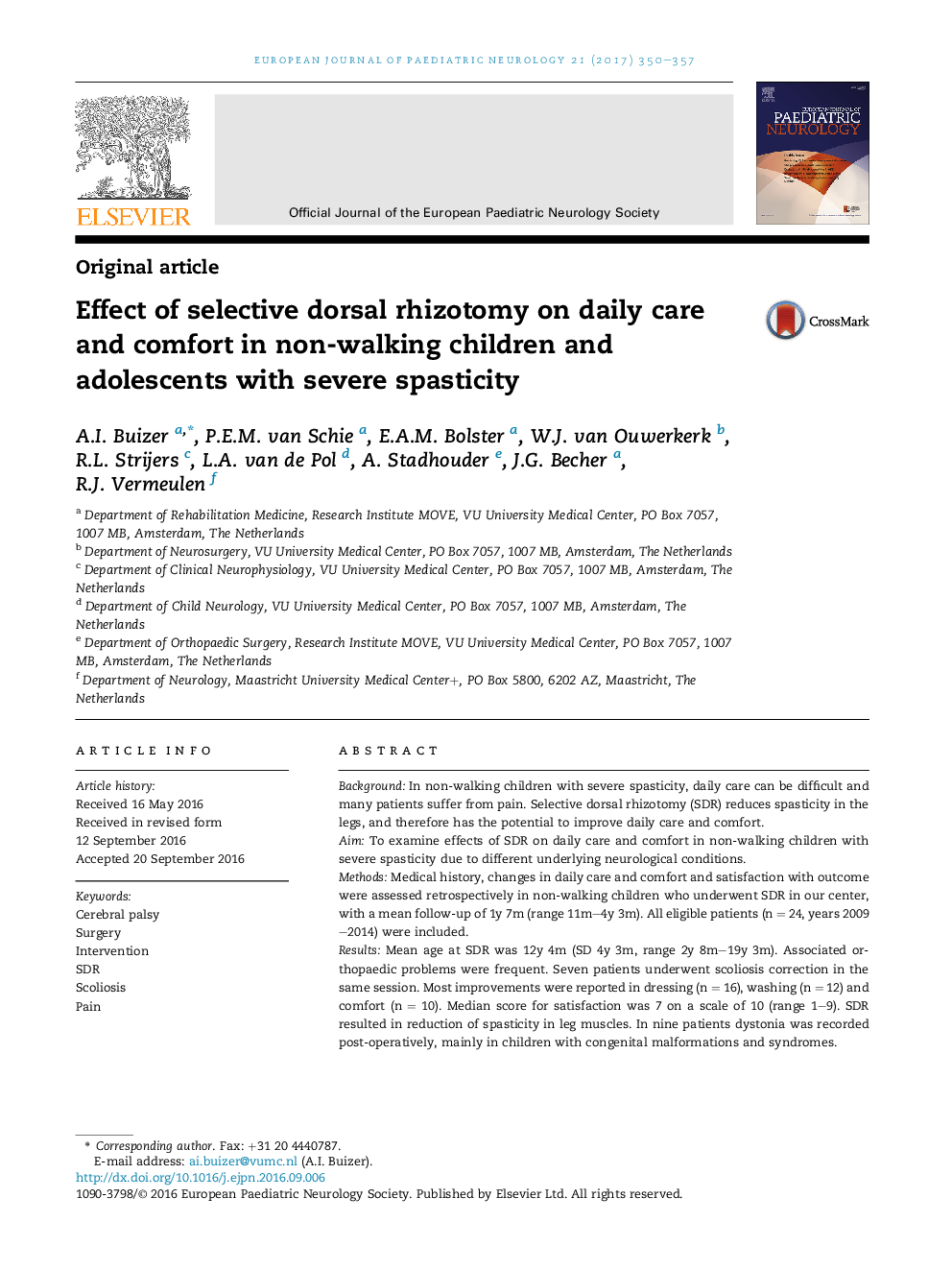| کد مقاله | کد نشریه | سال انتشار | مقاله انگلیسی | نسخه تمام متن |
|---|---|---|---|---|
| 5628958 | 1580001 | 2017 | 8 صفحه PDF | دانلود رایگان |
- Selective dorsal rhizotomy (SDR) can improve daily care and comfort in severe spasticity.
- SDR has a low complication risk and can be safely combined with scoliosis correction.
- Patient selection should be done with caution.
- Dystonia may be unmasked, mainly in children with congenital malformations and syndromes.
- Persistent orthopaedic problems and emergence of dystonia can reduce satisfaction.
BackgroundIn non-walking children with severe spasticity, daily care can be difficult and many patients suffer from pain. Selective dorsal rhizotomy (SDR) reduces spasticity in the legs, and therefore has the potential to improve daily care and comfort.AimTo examine effects of SDR on daily care and comfort in non-walking children with severe spasticity due to different underlying neurological conditions.MethodsMedical history, changes in daily care and comfort and satisfaction with outcome were assessed retrospectively in non-walking children who underwent SDR in our center, with a mean follow-up of 1y 7m (range 11m-4y 3m). All eligible patients (n = 24, years 2009-2014) were included.ResultsMean age at SDR was 12y 4m (SD 4y 3m, range 2y 8m-19y 3m). Associated orthopaedic problems were frequent. Seven patients underwent scoliosis correction in the same session. Most improvements were reported in dressing (n = 16), washing (n = 12) and comfort (n = 10). Median score for satisfaction was 7 on a scale of 10 (range 1-9). SDR resulted in reduction of spasticity in leg muscles. In nine patients dystonia was recorded post-operatively, mainly in children with congenital malformations and syndromes.InterpretationSDR is a single event intervention that can improve daily care and comfort in non-walking children with severe spasticity, and can safely be combined with scoliosis correction. Despite the improvements, satisfaction is variable. Careful attention is necessary for risk factors for dystonia, which may be unmasked after SDR.
Journal: European Journal of Paediatric Neurology - Volume 21, Issue 2, March 2017, Pages 350-357
